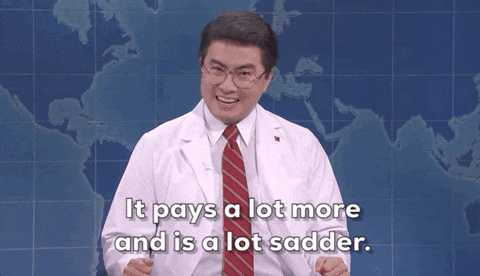There are 3 categories of strategies to increase impact factor: the Traditional Approach, the Editorial Approach, and the Reader Approach.
We have identified 17 + 1 ideas based on the latest experience from theory and practice we observed and researched.
By reviewing these methods, you could improve the quality of your publication, get more citations, learn strategies, e.g., using special issues, case reports, tailoring your publications for a specific university, index, or editors.
People use Journal Impact Factors to measure the quality of individual research articles, to assess an individual scientist’s contributions, or in hiring, promotion, or funding decisions.
So with these ideas you should see increase in your impact factor.
This article presents you the ideas first, and then goes beyond the HOW and ponder on the WHY. At the end, we will go a little deeper to question the use of the impact factor.
Table of Contents
I. The Traditional Methods
#1. Find leverage for impact factors
Good authorities are often highly cited as they tend to have more original articles, more cited papers, and a higher number of publications. People are more likely to reference the research for topical relevance.
One way to compensate for low impact factors is to highlight affiliations with a good reputation in the community. JSTOR is affiliated with ITHAKA. It is a non-profit organization that aids academic institutions using digital tech.
#2. Create a blurb to allow quick scanning
You should make sure your authors provide a good article summary that includes context, hypotheses, methodologies, key findings, interpretations, stated questions, etc.
Turn it into a simple blurb with one or two lines that allow for quick scanning and be enjoyable for researchers to read the summary and scroll further down.
#3. Focus on Niche Target Readers

If you have a niche scientific focus, target those scientists accordingly. Tailoring your publication for scientists with a special focus is more likely to improve citation from them. You may also target scientific researchers from a university, focus on a system, or a society.
Assuming you have a good editor, you should receive more citations because your scientific papers and publications are more relevant. For example, take this article that brings Covid and Cancer together.
#4. Make it Peer-Reviewed
The science community tends to trust peer-reviewers more. Peer-reviewers tend to be experts in the same field as the author. Authors who can pass the peer-review process tend to produce a better quality of their work. So, there is no guesswork involved on the reader’s part regarding citing their article.
II. The Editorial Approach
#5. Focus On Attracting Diverse Content
Develop new article types to attract a diverse range of authors.
For instance, commission special issues a couple of times a year. This includes curated collections on a single topic. These ideas will encourage authors to submit to journals that they otherwise may not consider. For example, here is a curated collection on Social Tourism.
#6. Expand the Scope and Allow Diverse Formatting Options
A scientific journal based on specific topics can get more targeted traffic which can increase citations.
Make sure that the title and the scope are descriptive and intuitive for readers and potential authors. The scope should clearly state the type of manuscripts, topics, and formats that are welcome. Allowing authors to submit their manuscripts in a variety of formats can attract more submissions.
#7. Promote Published Articles
An editor’s job should not end once an article is published. Promote your articles to increase awareness, attract citations, and improve usage. Invest time and effort into a marketing mechanism that works for your niche.
#8. Promote Authenticity
Talented authors are usually picky about the journals they approach for publication. Encourage them to publish their best articles in your journal by projecting clear standards.
For example, list the affiliations, list of names, and contact details of the key staff on the online and print versions of the journal.
This includes the Editor and the Editorial Board Members.
#9. Promote Journal Authenticity
Make sure you have clear ethics policies and a process to enforce them. Improve journal credibility by joining reputable organizations such as the Committee on Publication Ethics (COPE). It will bolster its commitment to quality.
#10. Shorten the Review Process
Articles that are published weeks after the submission date can become obsolete. Fresh and recent studies are more likely to be cited than outdated articles. Make sure your review process works efficiently – shorter turnaround times tend to attract more article submissions.
III. The Reader Approach
#11. Develop a Niche
A journal’s scope is a big factor, upon which researchers make decisions for a journal within their target pool. While the journal should publish a diverse range of topics, allowing certain specialties or focusing on a niche will also prove productive.
How? By specializing in a certain topic or field, your journal will be the go-to resource for research or citations for target researchers.
#12. Make Articles Free and Accessible
One of the trending methods is changing the price factor of the journal. Readers and researchers, in general, take minutes to scan an article and move on to the next. If they encounter a paywall or are asked to provide a review before moving onto the next article, they abandon the journal.
Make some of your articles free and accessible to prevent this from happening.
#13. Eliminate Ads
Display ads can be an excellent way to monetize a journal. Just be mindful of the impact on user experience. For instance, avoid having pop-up ads every few minutes. You also don’t want to distract them from the content they are researching.
#14. Make Article Easy to Search
Articles that are SEO optimized pop up on the first page of search results. By educating authors about how they can optimize their content, you can indirectly attract more readers and thus citations.
Optimizing academic articles is called Academic Search Engine Optimization (ASEO). It ensures that all research content is visible online and also ranks high in results displayed by popular search engines. Besides Google, this also includes Google Scholar.
#15. Get Indexed
Try to get your journal included in several niche indices to increase its rank. Open databases are available for free. If your journal has a low impact factor, start by adding it to this index. These give more weight to content quality rather than publishing history.
As your IF improves, switch to commercial indexes.
These are the best way to get your journal discovered by target readers. These require a paid subscription and each has its own criteria for inclusion. High-quality peer-reviewed content, consistent publishing history, and a strong editorial board are essential for inclusion.
#16. Publish Review Articles
Review articles that discuss published literature can entice readers and thus attract more citations. High impact topics that are compiled in a special issue can also provide the same benefit, just faster. Of course, promoting both approaches can also attract target readers.
#17. Promote Older Research
While high levels of self-citation are frowned upon, authors can cite research from older published articles. Encourage reviewers to check out submitted papers and make references to the journal when they cite them.
However, don’t make journal self-citation a rule.
It is an unethical practice that may negatively impact the journal’s impact factor.
Final Tip: Be agile and flexible

There is a Chinese saying that basically means: No martial arts can beat speed. The truth is there what works for someone may not always work for another. You may need to be willing to experiment. Take what is useful and discard what is not. Adopt to your system. Keep moving. Take a page from Bruce Lee.
Closing Thoughts
Having high impact factor scores could help you attract more university funding, better papers, researches, editors, which lead to better metrics in terms of publications and citations.
Science shouldn’t be just about funding, metrics, papers, and citations. Science isn’t just about numbers. It might start with a university or a lab, but it should end with a real impact on society.
That’s the ideal world. And, we all know reality doesn’t always agree with what’s ideal.
It remains one of the great mysteries how a score designed mainly for librarians became a major reference point for making important decisions like hiring, performance, promotion, etc.
Citation, Citation, Citation, Citation
If you haven’t heard the word citation repeated like that, you are probably too young to understand the special relationship we have with citation. If publishing a paper is king, then citation is the queen.
A citation is a token of the influence of your paper.
Being highly cited is important in science

Having highly cited papers helps a researcher’s career. A university may use the number of citations, articles published, papers, quality of paper, contribution to publishing or special issue, diversity of citations and papers, and impact factors of papers cited to measure performance.
A university professor will be proud to have articles or just a paper published in journals with a high impact factor.
We are trying to level the playing field
We can’t really change how people use Impact Factor. It’s our hope to use this post to level the playing field. We are constantly looking and collecting ideas that could help you grow your influence. We look forward to learning from your experience.
May your papers get cited more.
FAQ
What is a good impact factor?
The short answer is it depends. In most fields, the impact factor of 10 or greater is considered an excellent score while 3 is flagged as good and the average score is less than 1. Check out this article to see what good looks like in 27 science categories.
We have an in-depth article here about the sometimes controversial indicator. It looks into our database of some 13,000 journals with a number of citations per year. Most importantly, it’s free and open access.
What are the other alternative scientific metrics?
Alternative metrics have been emerging and getting some attention. But, a journal impact factor is still the key measure for the quality of a publication. Journal editors love having great authors to cite in relation to the articles publishes or papers published.
What is DORA?
DORA refers to the San Francisco Declaration on Research Assessment. It’s basically an antithesis to Impact Factor.
One of DORA’ statements reads: “Do not use journal-based metrics, such as Journal Impact Factors, as a surrogate measure of the quality of individual research articles, to assess an individual scientist’s contributions, or in hiring, promotion, or funding decisions.”



I’m trying to find out what the copyright permissions are to use
https://www.scijournal.org/articles/famous-asian-scientists
on the Anne Arundel County Public Schools curriculum website for a teacher’s resource.
Your website has no contact #’s or information regarding.
Please adivse
Thank you for asking such a great question. For website content, we will appreciate if you simply reference us as “scijournal.org” or put the link of the article that you are referring to.
Have a great day!
Dear Miss Figuerado,
Thank you for your interest in using our article “Famous Asian Scientists” on the Anne Arundel County Public Schools curriculum website. Apologies to our delayed response.
We would be happy to help you with this request – our team will reach out to you. Please contact us at support@scijournal.org for other enquiries.
You may also reference to our article as long as you link (preferably a do-follow link) to the article directly or scijournal.org.
We apologize for any inconvenience caused by the lack of contact information on our website – it’s live now. We will make sure to update our website with clear information for such requests in the future.